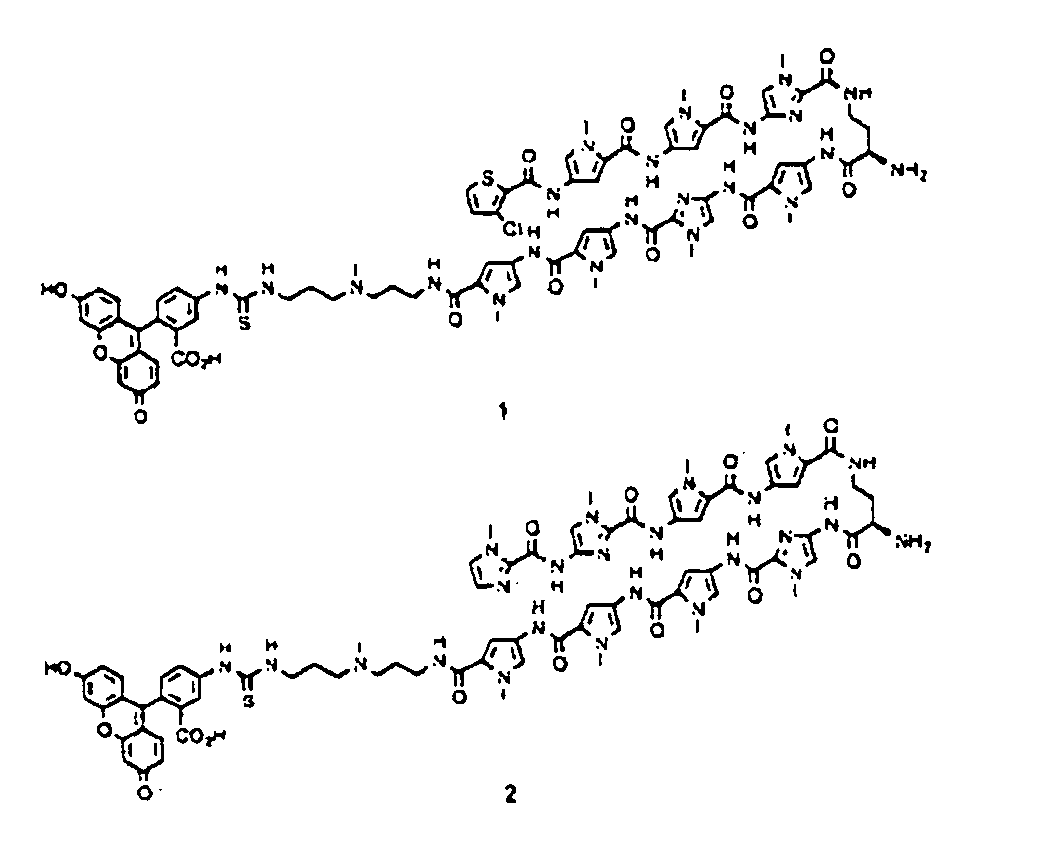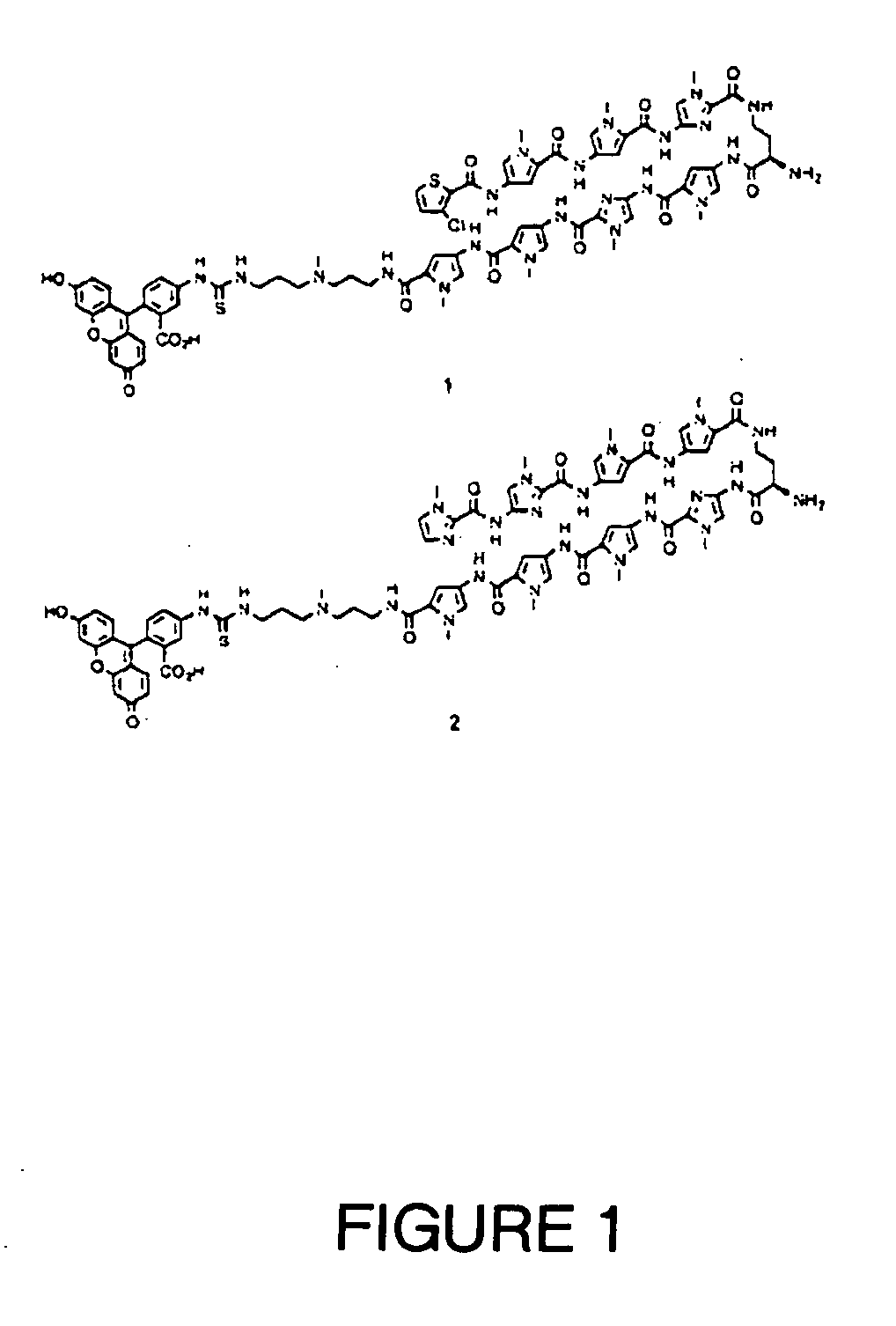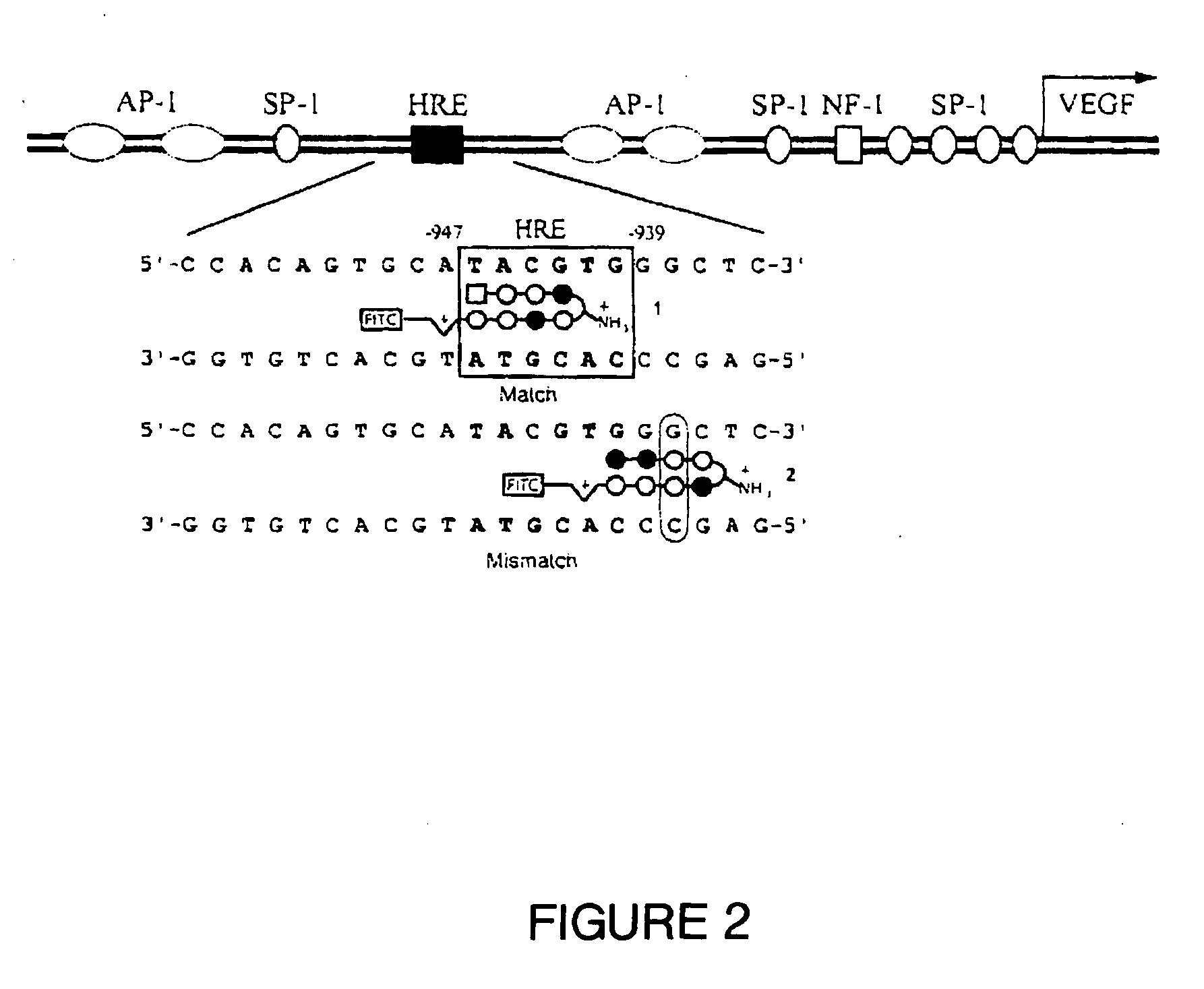Composition and methods for inhibiting expression of hypoxia-inducible genes
a technology of hypoxia and inducible genes, applied in the field of therapeutic compositions and methods, can solve the problems of increasing the cost of health, cancer remains a major cause of morbidity and mortality in humans, and cancer inflicts a great burden on society, so as to reduce or inhibit the expression of hypoxia inducible genes, reduce or inhibit angiogenesis
- Summary
- Abstract
- Description
- Claims
- Application Information
AI Technical Summary
Benefits of technology
Problems solved by technology
Method used
Image
Examples
example 1
Synthesis of Polyamides
[0077] Polyamides 1 and 2 (FIG. 1) were synthesized by solid-phase methods of Kaiser oxime resin (Nova Biochem) (Belitsky, et al. (2002) Bioorg. Med. Chem. 10:2767-2774) and conjugated to FITC isomer I (Best, et al. (2003) Proc. Natl. Acad. Sci. USA 100:12063-12068). The purity and identity of the polyamide-dye conjugates were verified by analytical HPLC, UV-visible spectroscopy, and MALDI-ToF MS.
example 2
Determination of DNA-Binding Affinities and Sequence Specificities of Polyamides 1 and 2
[0078] A 5′32P-labeled fragment was generated by PCR amplification of the site from the plasmid pGL2-VEGF-Luc by using primers 5′-CTC AGT TCC CTG GCA ACA TCT-3′ (VEGFP1) and 5′-TGG CAC CAA GTT TGT GGA GCT-3′ (VEGFP2) and isolated by nondenaturing gel electrophoresis (Trauger, et al. (2001) Methods Enzymol. 340:450-466). Quantitative DNase I footprint titration experiments were used to determine the binding affinities and specificities of polyamides 1 and 2 (Trauger, et al.).
[0079] Based on the pairing rules, match polyamide 1 targets sequences of the type 5′-WTWCGW-3′ (where W=A or T), whereas mismatch polyamide 2 targets sequences of the type 5′-WGGWCW-3′. The 3-chlorothiophene ring at the N terminus of polyamide 1 provides specificity for a T·A base pair (Foister, et al. (2003) Bioorg. Med. Chem. 11:4333-4340). The detailed binding sites were mapped for both match and mismatch polyamides on t...
example 3
Disruption of the HIF-DNA Complex
[0080] The HIF1α / ARNT heterodimer was transcribed / translated in vitro by using Promega TNT kit according to the manufacturer's instructions. The double-strand oligonucleotide probe was prepared by annealing the two complementary strands 5′-GAC TCC ACA GTG CAT ACG TGG GCT CCA ACA GGT-3′ (HRE-EMSA1) and 5′-ACG TGT TGG AGC CCA CGT ATG CAC TGT GGA GTC-3′ (HRE-EMSA2). Before annealing, the HRE-EMSA1 oligonucleotide was 5′-end radiolabeled with γ-32-P-ATP (NEN) and T4 polynucleotide kinase, as described. The radiolabeled double-strand oligonucleotide probe was isolated by using a G25 Quickspin column (Boehringer Mannheim).
[0081] Polyamides were pre-incubated with the radiolabeled oligonucleotide in Z-buffer (100 mM KCl / 25 mM Tris, pH 7.5 / 0.2 mM EDTA / 20% glycerol / 0.25 mg / ml BSA / 0.05% Nonidel P-40 / 5 mM DTT / 0.1 mg / ml PMSF / 1.2 mM sodium vanadate) at 0° C. for 30 minutes. Then, the in vitro transcribed / translated protein mixture, diluted with the same buffer,...
PUM
 Login to View More
Login to View More Abstract
Description
Claims
Application Information
 Login to View More
Login to View More - R&D
- Intellectual Property
- Life Sciences
- Materials
- Tech Scout
- Unparalleled Data Quality
- Higher Quality Content
- 60% Fewer Hallucinations
Browse by: Latest US Patents, China's latest patents, Technical Efficacy Thesaurus, Application Domain, Technology Topic, Popular Technical Reports.
© 2025 PatSnap. All rights reserved.Legal|Privacy policy|Modern Slavery Act Transparency Statement|Sitemap|About US| Contact US: help@patsnap.com



